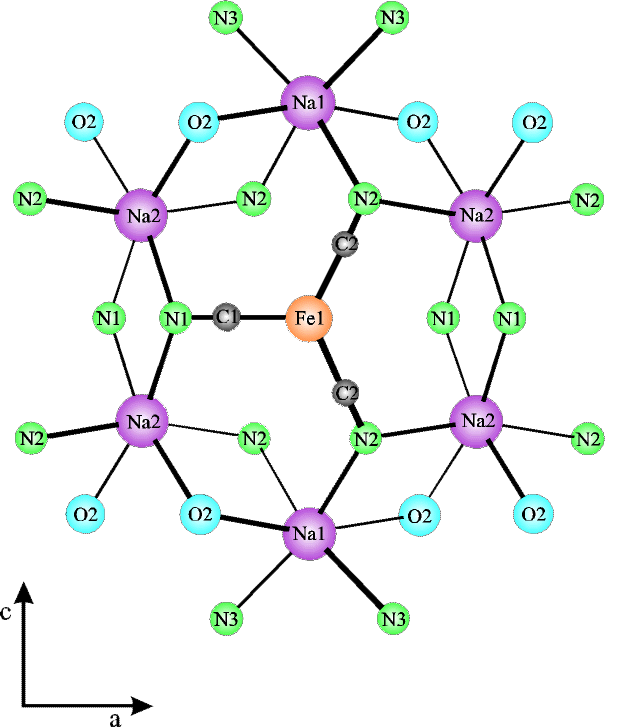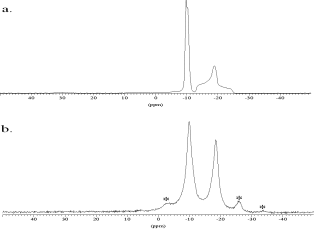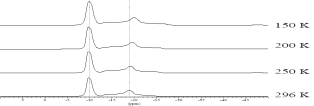A 23Na MAS NMR study of Sodium nitrosyl prussiate Na2[Fe(CN)5(NO)] 2 H2O, a potential light optical memory material

Sodium nitrosyl prussiate ![]() is capable to store holograms by irradiation with light in a spectral width of 350 - 580 nm and 600 - 1200 nm because of population and depopulation of metastable electron states below temperatures of 200 K. These states are stable on account of the high average lifetimes of electron states (
is capable to store holograms by irradiation with light in a spectral width of 350 - 580 nm and 600 - 1200 nm because of population and depopulation of metastable electron states below temperatures of 200 K. These states are stable on account of the high average lifetimes of electron states (![]() = 108 s) [20].
= 108 s) [20].
The metastable excitation state is characterized by a strong alteration of the nitrosyl position in the structure. To study structural changes in the crystal structure 23Na MAS and DOR NMR experiments were carried out to get local structure information about sodium sites at room temperature and temperatures below 200 K. The lattice is orthorhombic and the structure crystallizes in spacegroup Pnnm. Figure 7 depicts structural details of the sodium coordination sphere. Two different sodium sites are present and sixfold coordinated. These two different sites can be distinguished in the 23Na DOR NMR experiments (Figure 8b). The quadrupolar coupling constants can be extracted from the 23Na MAS NMR spectrum in Figure 8a. While the Na(2) position experience only low quadrupolar interaction with CQ = 599 kHz and h = 0.35, the interaction for Na(1) is quite larger with CQ = 1.347 MHz and shows a large asymmetry parameter(![]() = 0.95). The ratio of areas is 48:52.
= 0.95). The ratio of areas is 48:52.
Electric field gradients (EFG) of the sodium sites were calculated with the WIEN97 program package [21] based on the FP-LAW method and are in good aggreement with the experimental values (Na(1): calc.: -0.69![]() 1021 V/m2 and
1021 V/m2 and ![]() = 0.97, exp.: (-)0.58
= 0.97, exp.: (-)0.58![]() 1021 V/m2 and
1021 V/m2 and ![]() = 0.95; Na(2): calc.: 0.29
= 0.95; Na(2): calc.: 0.29![]() 1021 V/m2 and
1021 V/m2 and ![]() = 0.34, exp.: 0.26
= 0.34, exp.: 0.26![]() 1021 V/m2 and
1021 V/m2 and ![]() = 0.35).
= 0.35).
Experiments at decreasing temperatures (Figure 9) show an increase of the quadrupolar coupling constant of Na(1) (1.35 MHz ![]() 1.55 MHz), while Na(2) is less influenced. Further NMR investigations of 23Na of the excited metastable state of sodium nitrosyl prussiate and 17O MAS NMR studies are planned.
1.55 MHz), while Na(2) is less influenced. Further NMR investigations of 23Na of the excited metastable state of sodium nitrosyl prussiate and 17O MAS NMR studies are planned.




